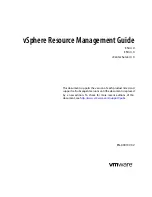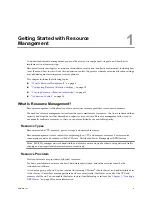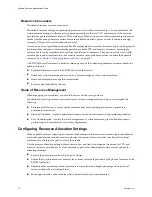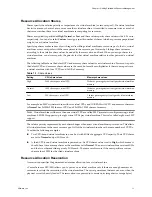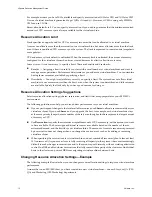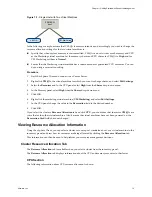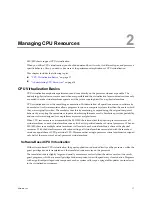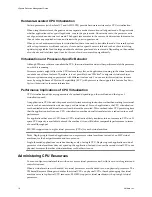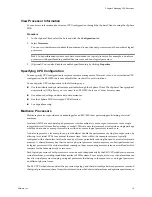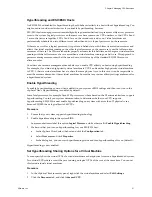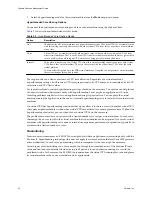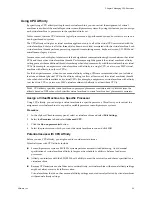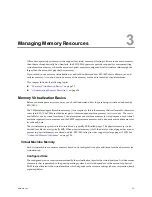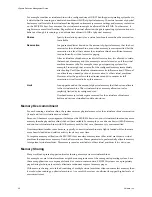
Resource Allocation Shares
Shares specify the relative priority or importance of a virtual machine (or resource pool). If a virtual machine
has twice as many shares of a resource as another virtual machine, it is entitled to consume twice as much of
that resource when these two virtual machines are competing for resources.
Shares are typically specified as High, Normal, or Low and these values specify share values with a 4:2:1 ratio,
respectively. You can also select Custom to assign a specific number of shares (which expresses a proportional
weight) to each virtual machine.
Specifying shares makes sense only with regard to sibling virtual machines or resource pools, that is, virtual
machines or resource pools with the same parent in the resource pool hierarchy. Siblings share resources
according to their relative share values, bounded by the reservation and limit. When you assign shares to a
virtual machine, you always specify the priority for that virtual machine relative to other powered-on virtual
machines.
The following table shows the default CPU and memory share values for a virtual machine. For resource pools,
the default CPU and memory share values are the same, but must be multiplied as if the resource pool were
a virtual machine with four VCPUs and 16 GB of memory.
Table 1-1.
Share Values
Setting
CPU share values
Memory share values
High
2000 shares per virtual CPU
20 shares per megabyte of configured virtual machine
memory.
Normal
1000 shares per virtual CPU
10 shares per megabyte of configured virtual machine
memory.
Low
500 shares per virtual CPU
5 shares per megabyte of configured virtual machine
memory.
For example, an SMP virtual machine with two virtual CPUs and 1GB RAM with CPU and memory shares set
to Normal has 2x1000=2000 shares of CPU and 10x1024=10240 shares of memory.
N
OTE
Virtual machines with more than one virtual CPU are called SMP (symmetric multiprocessing) virtual
machines. ESX/ESXi supports up to eight virtual CPUs per virtual machine. This is also called eight-way SMP
support.
The relative priority represented by each share changes when a new virtual machine is powered on. This affects
all virtual machines in the same resource pool. All of the virtual machines have the same number of VCPUs.
Consider the following examples.
n
Two CPU-bound virtual machines run on a host with 8GHz of aggregate CPU capacity. Their CPU shares
are set to Normal and get 4GHz each.
n
A third CPU-bound virtual machine is powered on. Its CPU shares value is set to High, which means it
should have twice as many shares as the machines set to Normal. The new virtual machine receives 4GHz
and the two other machines get only 2GHz each. The same result occurs if the user specifies a custom
share value of 2000 for the third virtual machine.
Resource Allocation Reservation
A reservation specifies the guaranteed minimum allocation for a virtual machine.
vCenter Server or ESX/ESXi allows you to power on a virtual machine only if there are enough unreserved
resources to satisfy the reservation of the virtual machine. The server guarantees that amount even when the
physical server is heavily loaded. The reservation is expressed in concrete units (megahertz or megabytes).
Chapter 1 Getting Started with Resource Management
VMware, Inc.
11
Summary of Contents for ESX 4.0
Page 6: ...vSphere Resource Management Guide 6 VMware Inc...
Page 44: ...vSphere Resource Management Guide 44 VMware Inc...
Page 52: ...vSphere Resource Management Guide 52 VMware Inc...
Page 72: ...vSphere Resource Management Guide 72 VMware Inc...
Page 80: ...vSphere Resource Management Guide 80 VMware Inc...

